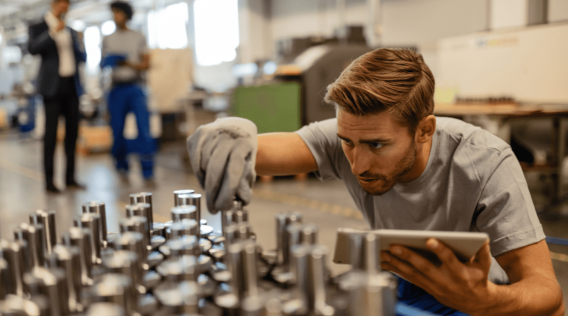Die casting is a manufacturing process in which molten metal is forced under high pressure into a mold cavity. The molten metal then solidifies, forming the desired shape. The process is used to produce a wide range of parts and components, from small and intricate to large and complex. The quality of the die casting mold is critical to the success of the process. Here are some tips for creating the perfect die casting mold.
1. Choose the Right Material
The material used to make the die casting mold will affect its quality and durability. The most common materials used for die casting molds are steel and aluminum. Steel is the more expensive option, but it is more durable and can withstand higher temperatures. Aluminum is less expensive, but it is easier to machine and can be faster to produce. Choose the material that best suits your needs based on your budget, production volume, and expected life of the mold.
2. Design the Mold for Quality
The design of the die casting mold is critical to the quality of the finished product. The mold must be designed with the proper draft angles, fillets, and radii to ensure that the molten metal flows smoothly and fills all the cavities. It must also be designed with the right gating and venting system to allow gases to escape and prevent defects like porosity and shrinkage.
3. Use Precision Machining
The mold must be machined with precision to ensure that it is accurate and consistent. This is especially important for complex shapes and features. CNC machining is the preferred method for creating high-quality die casting molds because it offers precise control and accuracy. It also allows for the creation of intricate details that would not be possible with conventional machining methods.
4. Maintain the Mold
Proper maintenance is critical to the longevity and quality of the die casting mold. The mold must be cleaned after each use to remove any residual material and prevent corrosion. Regular inspections should also be conducted to check for any signs of wear or damage. Any issues should be addressed immediately to prevent further damage and ensure that the mold is in good condition for the next use.

5. Test and Validate
Before starting production, it is important to test and validate the die casting mold to ensure that it meets the required specifications. This includes testing for dimensional accuracy, surface finish, and strength. This will help to identify any issues before the mold is put into production, reducing the risk of defects and scrap.
In conclusion, creating the perfect die casting mold requires careful consideration of the material, design, machining, maintenance, and testing. By following these tips, you can ensure that your die casting mold will produce high-quality parts and components that meet your exact requirements.
-

- parts&comopnents for bicycle suspension fork for MTB
-

- Thixomolding magnesium parts & components mobile phone middle board
-

- Magnesium alloy rigid fork for bicycle -customized die casting metal parts
-

- Integrated 3-spoke wheel for MTB with CNC machining &surface treatment
-

- Magnesium alloy die-casting auto parts center control cover
-

- Laptop housing cover C

 0086-750-5616188
0086-750-5616188 +86 13392089688
+86 13392089688 sales@zhongmei-tech.com
sales@zhongmei-tech.com







